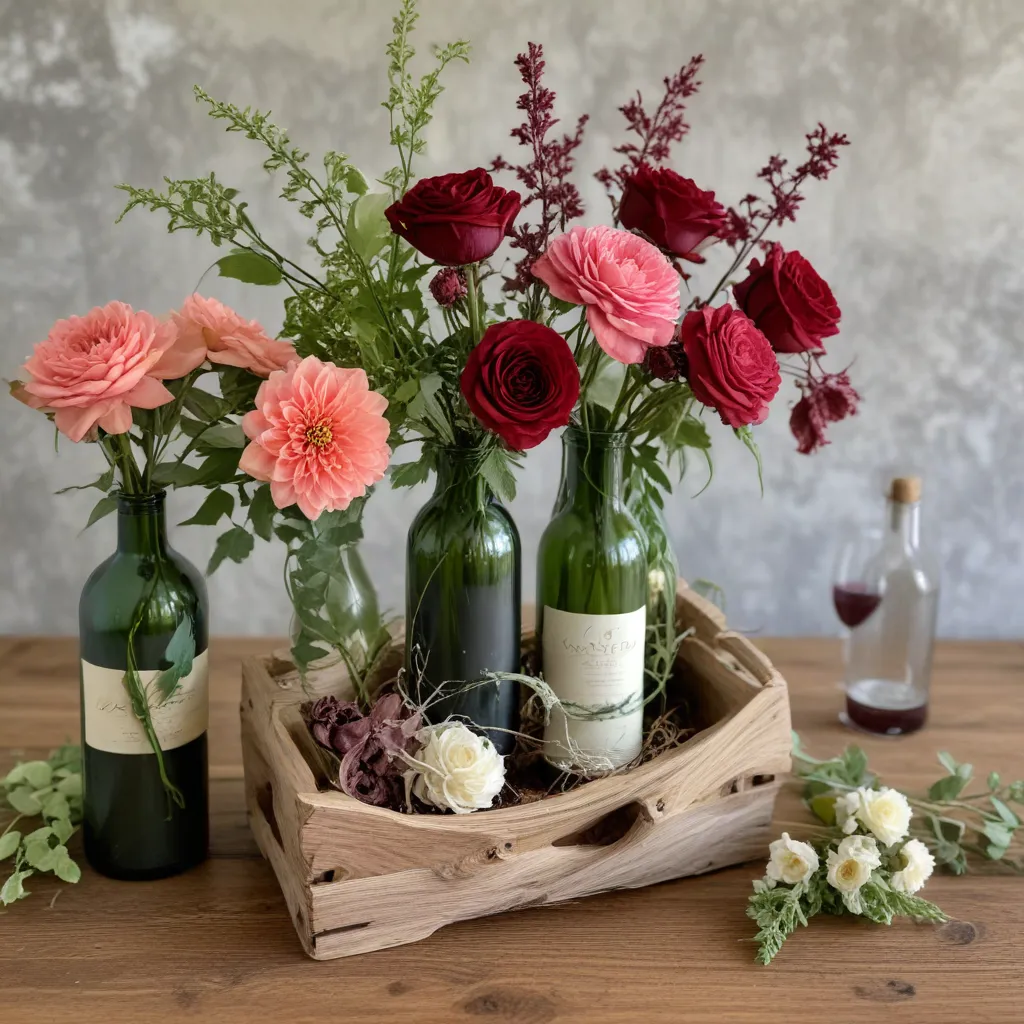
Vine to Vase: Repurposing Wine Byproducts for Sustainable Floral Designs
As a hospitality and wine expert, I’m always on the lookout for innovative ways to incorporate our estate-grown produce, local ingredients, and byproducts from the winemaking process into artistic floral designs. At the Wine Garden Inn, we’re committed to sustainability across all aspects of our operations, and this extends to how we source and prepare our flowers.
Sustainability in Floral Industry
The floral industry has long grappled with environmental concerns, from the carbon footprint of international supply chains to the resource-intensive cultivation methods used by many commercial growers. However, a growing number of eco-conscious consumers are demanding more sustainable floral options that align with their values. By repurposing wine byproducts, we not only reduce waste but also cultivate a unique aesthetic that celebrates the terroir of our region.
Repurposing Wine Byproducts
After each harvest, our winery is left with an abundance of corks, bottles, and grape marc (the skins, seeds, and stems leftover from pressing). Rather than discarding these materials, our floral design team has discovered myriad ways to breathe new life into them. Empty wine bottles, for example, make excellent vases, while corks can be fashioned into rustic candle holders or unique boutonni??res.
The grape marc, meanwhile, has proven to be a versatile and surprisingly durable material. After drying, the skins and stems can be woven into intricate wreaths or even incorporated directly into floral arrangements, adding texture and visual interest. The seeds, on the other hand, make a lovely natural mulch for our cutting gardens, helping to retain moisture and suppress weeds.
Wine-Inspired Floral Creations
Our guests are always delighted by the creative ways we incorporate wine elements into our floral designs. For a recent event, we crafted a stunning centerpiece using an old oak barrel as the base, filling it with a lush, cascading arrangement of wine-colored blooms, grape leaves, and dried grape clusters. The effect was both rustic and elegant, perfectly capturing the spirit of our Wine Garden Inn.
In another arrangement, we repurposed a set of antique decanters, suspending them from a custom-built trellis and filling them with delicate, trailing vines and flowers. The play of light through the glass created a mesmerizing, jewel-toned display that evoked the beauty of our vineyards.
Viticulture Waste Management
Managing the waste generated from our winemaking operations is an ongoing challenge, but one that we’ve tackled head-on through innovative solutions. Rather than simply discarding our grape marc, for instance, we’ve partnered with a local livestock farmer who uses the nutrient-rich material as a valuable soil amendment for his fields.
Vineyard Waste Utilization
Similarly, the prunings from our vineyard are collected and chipped into a coarse mulch, which we then spread around the base of our vines. Not only does this help to retain moisture and suppress weeds, but it also returns essential organic matter to the soil, improving its long-term fertility.
Winery Byproduct Valorization
In the winery itself, we’ve found creative ways to repurpose our byproducts. Leftover corks, for example, are collected and sent to a specialized recycler, who transforms them into a range of products, from flooring to insulation. Even our wastewater is treated on-site and then used to irrigate our landscaping, closing the loop on our resource use.
Circular Economy Approaches
By adopting a circular economy mindset, we’re able to minimize waste, reduce our environmental impact, and generate additional revenue streams from materials that would otherwise be discarded. This holistic approach to resource management not only benefits our business but also aligns with the growing consumer demand for eco-friendly practices in the hospitality industry.
Upcycling Wine Materials
Our floral designers take great pride in their ability to transform humble wine byproducts into works of art. Whether it’s fashioning delicate bouquets from dried grape leaves or creating sculptural centerpieces from reclaimed wine bottles, they constantly push the boundaries of what’s possible.
Floral Design Aesthetics
The resulting floral arrangements possess a unique, wine-inspired aesthetic that resonates with our guests. The earthy tones, organic textures, and subtle nods to our winemaking process create a sense of place and authenticity that is truly special.
Sustainable Sourcing
In addition to repurposing our own winery byproducts, we also source locally grown, sustainably cultivated flowers whenever possible. By partnering with small-scale growers who employ eco-friendly practices, we’re able to minimize the carbon footprint of our floral supply chain while supporting the local economy.
Consumer Demand for Green Florals
As consumer awareness of environmental issues continues to grow, we’ve noticed a significant uptick in demand for eco-friendly floral options. Guests are increasingly drawn to arrangements that incorporate natural, locally sourced materials and minimize the use of resource-intensive, synthetic elements.
Eco-Friendly Floral Supply Chains
To meet this demand, the floral industry as a whole is evolving, with more growers and wholesalers adopting sustainable practices. From reducing pesticide use to implementing water conservation measures, these companies are paving the way for a more environmentally conscious floral supply chain.
Industry Certifications and Standards
In addition to sourcing locally, we also look for floral suppliers who have earned industry certifications, such as Veriflora or Rainforest Alliance, ensuring that their growing and handling practices adhere to rigorous environmental and social standards.
By embracing the wealth of opportunities presented by our winery’s byproducts, the Wine Garden Inn is able to create stunning, one-of-a-kind floral designs that not only delight our guests but also contribute to a more sustainable future for the hospitality and floral industries. As we continue to explore new and innovative ways to repurpose our viticultural waste, we’re excited to share our journey with our community and inspire others to follow suit.
